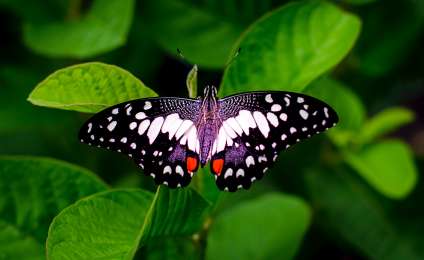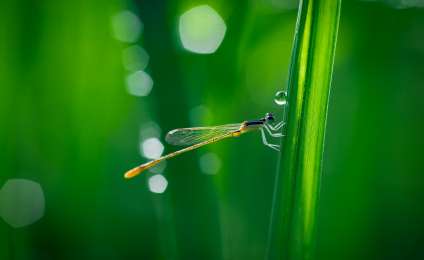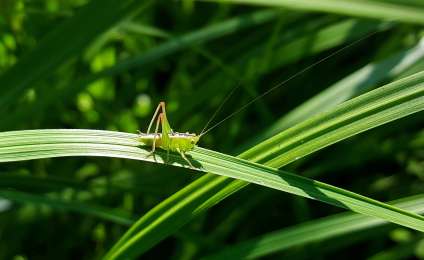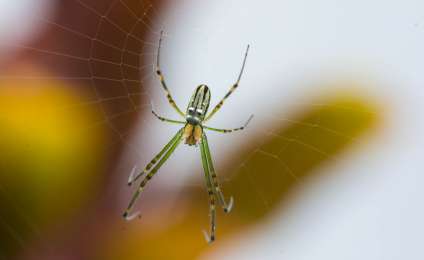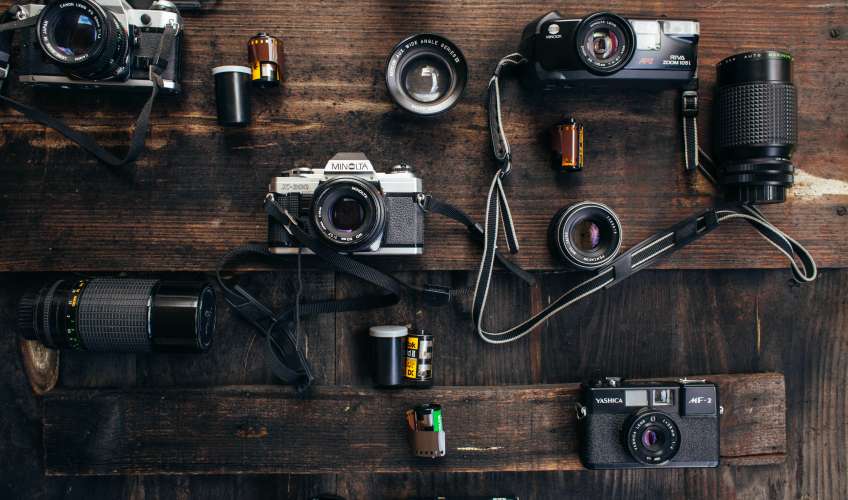How to photograph insects
Published: 17.12.2021

The animal world is diverse and interesting. Photos with animals always attract attention and leave few people indifferent. But people mostly take pictures of their pets. Photos with cats, dogs, and hamsters no longer surprise anyone. If you want to stand out from the crowd, try photographing insects. These tiny creatures look amazing and original. Insects are a whole world that is around us, but few pay attention to it. By observing the behavior of butterflies, bees, grasshoppers, dragonflies, and other small creatures, you can take mesmerizing photos. Photographing insects is a complex and time-consuming activity, nevertheless fascinating and wonderful. Engaging in insect photography can not only improve your macro photography skills, but also allow you to get closer to nature, spend more time outdoors. You will get a lot of pleasure from successfully taken shots. Let's consider what to pay attention to if you decide to photograph insects.
"What you need to know about insect behavior to capture successful shots"
Before heading out on a photo hunt, study information about insects. Find out where they live, when they are active or resting, and how they behave when they sense danger. Choose a specific type of insect, study their habits, and you will have a better chance of taking successful photos. Pay attention to the following points:
How to properly set up a camera for shooting in a nightclub
Switch from automatic mode to manual mode when taking photos, so you can control all the camera settings yourself. The settings will depend on the type and brightness of the lighting in the nightclub, so it's hard to say exactly which parameters will work best for you. Here are some average values that you may need for shooting in a nightclub.
- Butterflies look spectacular and colorful in photographs, but they are very skittish and difficult to approach. It is better to choose a time for shooting early in the morning or in the evening when the air temperature is lower, and insects are less active. Find out which flowers and plants different species of butterflies prefer, be patient, and wait for the perfect moment.
- Caterpillars are less mobile than butterflies, but they are not any easier to capture. When they sense danger, the caterpillar quickly curls up, and you have to wait a long time for it to unfurl again. Additionally, caterpillars choose plants that blend in with them, so getting a clear and contrasting shot can be quite difficult.
- Dragonflies may look bright and attractive in photos, but they move quickly and are also very skittish. Use a burst mode shooting, then you will be able to capture the right moment and take a photo in flight. Head out for the shoot early in the morning, before the air temperature reaches the threshold for dragonflies to start flying, they are resting and staying still. If you're lucky, you might be able to capture a whole swarm of dragonflies.
- It is quite easy to find crickets and grasshoppers by sound, but it is difficult to catch them in a still position. Filming is complicated by the fact that insects live in dense grass and blend in with the background. Try to blur the background and focus on the insect to get a contrasting and clear shot.
No matter what type of insects you choose, you will need good photography equipment and knowledge of macro photography techniques. We recommend using the following tips when taking photos:
- For shooting insects, you will need a good macro lens with a long focal length. You should be able to focus on the object without getting too close to it, so choose high-quality professional optics.
- Use a tripod so that your hand does not shake at the most crucial moment and you do not end up with a blurry shot. It is better to choose a small foldable tripod that is convenient to take with you into the field, by the river, in the forest, and other places where insects live. You will also need a remote control to trigger the camera shutter, which will allow you not to scare away the insect at the most crucial moment. Often, you have to catch miniature creatures literally on the fly and shoot them handheld. In this case, you will have to stay in one position for a long time to capture the perfect shot.
- Turn off autofocus, even the most advanced technology cannot capture changes in a quickly moving small object. Adjust the focus manually, set it on the eyes, head, or legs of the insect.
- Set a low depth of field and use low aperture values. Use a short exposure time, as a long exposure time may not capture the small subject in the frame. A low depth of field allows you to focus sharply on the subject, blurring the background.
- The background is important when shooting insects. Dark insects are best photographed against a light background to illuminate the background, use flash. Bright insects, on the other hand, will look better against a dark background. You can darken the background in a graphics editor, focusing on the insect.
- When shooting macro, use a protective filter that will prevent damage to the lens in field conditions.
- During shooting on a bright sunny day, use a flash to control shadows and contrast in the photo.
Create a Light album from your cool photos. You don't need to print the photos separately for this. We will print your photos directly onto the pages of the Light album. Upload your images to the free Mapi7 editor and create a themed Light album. You can upload photos from your phone.
The most favorable conditions for shooting insects can be created in a photo studio. Although animal rights activists insist that insects should only be photographed in their natural habitat, some species can be moved to the studio to take high-quality photos with perfect background and lighting. For example, in a photo studio, you can shoot spiders, flies, decorative butterflies, and snails. Try not to harm your models in order to get a good shot.
The most important thing in any endeavor is experience, persistence, and patience. If you have a restless character and find it difficult to stay in one place for a long time in a stationary state, it is better to choose other subjects for shooting. But if you love to spend hours watching insects and it brings you pleasure, boldly start experimenting and trying to take photos. With time and experience, you will create real masterpieces that you can preserve by printing a Light album or a photo book.

